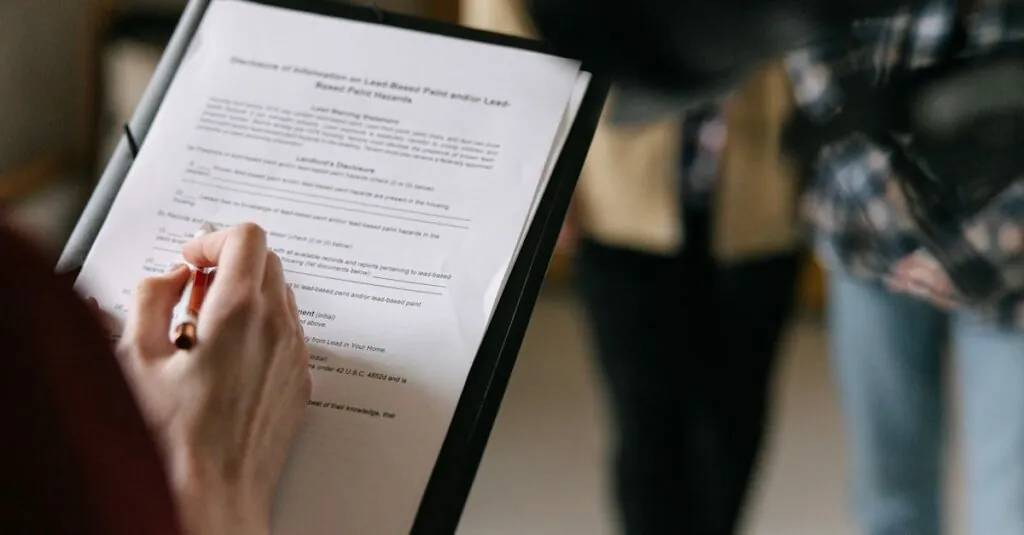Moving an office can feel like herding cats—chaotic and slightly overwhelming. But fear not! With the right office relocation checklist, it doesn’t have to be a circus act. Whether it’s packing up the coffee machine that fuels late-night brainstorming or ensuring everyone knows where the new snack stash will be, a well-organized plan can turn this daunting task into a smooth transition.
Table of Contents
ToggleImportance Of An Office Relocation Checklist
An office relocation checklist plays a crucial role in ensuring a seamless move. By detailing specific tasks, it minimizes confusion and establishes a clear timeline. Employees gain clarity regarding their responsibilities and adjust to new roles easily when a checklist is in place.
Organizing logistics is vital. An effective checklist allows teams to coordinate transport, set up utilities, and schedule IT equipment installation without unnecessary delays. Tracking inventory ensures essential items are ready and accessible on move day.
Prioritizing employee communication fosters a sense of security within the team. Informing staff about key dates, changes, and the new office layout reduces anxiety. When individuals understand what to expect, they engage actively in the process.
Budget considerations also matter during relocation. A checklist aids in forecasting costs, helping teams avoid unplanned expenses. Monitoring expenses ensures that financial resources remain allocated efficiently throughout the move.
Meeting deadlines is essential. An office relocation checklist helps keep various tasks on schedule, ensuring that the move aligns with operational timelines. By adhering to timelines, disruptions to business operations can be minimized.
An office relocation checklist is indispensable for successful transitions. It streamlines communication, organization, and budgeting. Implementing this tool significantly enhances the efficiency of the moving process, allowing businesses to focus on maintaining productivity during the change.
Preparing For The Move
Preparing for an office relocation involves critical assessments and planning to ensure efficiency. By addressing current space needs and future requirements, teams can streamline activities for a successful transition.
Assessing Your Current Office Space
Evaluating the existing office setup is the first step. Identify underutilized spaces and areas that hinder productivity, assessing layout effectiveness. Gather feedback from employees about functionality and comfort. Understanding current limitations helps in making informed decisions for the new space. Inventory important equipment and resources, ensuring everything essential receives attention during the move. This assessment sets a strong foundation for defining new office needs.
Defining Your New Office Space Requirements
Determining requirements for the new office enhances planning efficiency. Consider necessary square footage based on employee count, aiming for around 150-200 square feet per employee. Factor in collaborative spaces, meeting rooms, and private offices to support diverse work styles. Prioritize access to amenities like break rooms and conference facilities, as these foster employee well-being and productivity. Establishing must-have features shortens the search process, allowing teams to focus on options that meet company needs.
Creating The Office Relocation Checklist
An effective office relocation checklist acts as a roadmap for a successful transition. It ensures that critical tasks are not overlooked during the move.
Key Items To Include
The checklist needs to include critical items such as packing materials, moving services, and communication plans. First, determine packing essentials like boxes, bubble wrap, and labels. Next, arrange for professional movers or a rental truck for transportation. Employee communication plans should include updates about moving timelines, new address details, and any changes in daily operations. Additionally, include a hardware inventory list to keep track of all office equipment and furniture, preventing loss during the move. Lastly, don’t forget to account for utility transfers to ensure seamless access to services on moving day.
Timeline And Milestones
Creating a timeline establishes order throughout the moving process. Start by setting a move date and working backward to identify critical milestones. For example, schedule an announcement to staff and finalize contracts with movers at least two months before the move. Prepare a timeline for packing, allocating time for smaller tasks like organizing files and decluttering office supplies. The checklist should also note dates for updating the company’s address with clients and vendors. Regular check-ins on progress ensure that all tasks align with overall deadlines. Having clear milestones aids in tracking progress and adapting as circumstances change.
Executing The Relocation Plan
Executing the relocation plan involves meticulous coordination and communication to ensure a smooth transition.
Working With Moving Companies
Choosing a reliable moving company sets the tone for a successful office relocation. Researching various options allows teams to compare services and rates. Evaluating customer reviews provides insight into past performance and reliability. Engaging with multiple movers facilitates better pricing and availability. Confirming insurance coverage ensures protection against potential damages during the move. Scheduling a walkthrough with the chosen company helps clarify logistics and planning details. Coordinating timelines with the moving team allows for efficient packing and transportation, minimizing operational disruptions.
Coordinating With Employees
Effective employee communication plays a vital role in minimizing disruption during the relocation. Sharing the timeline as soon as it is available ensures staff is informed and feels included in the process. Holding informational meetings allows employees to voice concerns and share input. Encouraging feedback fosters a sense of ownership and readiness for the move. Providing regular updates keeps everyone informed about milestones and decisions. Distributing a detailed FAQ can address common queries, reducing anxiety. Reinforcing a positive outlook creates excitement about the new office space, ultimately supporting morale throughout the transition.
Post-Move Considerations
Post-move considerations play a crucial role in ensuring a successful transition to the new office space. Focusing on key tasks helps to solidify the move’s success.
Setting Up The New Office
Arranging the new office involves planning the layout for optimal workflow and employee comfort. Identifying designated spaces for collaborative work, private meetings, and leisure areas enhances productivity. It’s important to ensure that technology, such as internet access and phone systems, is functional immediately. Placing furniture and equipment thoughtfully can foster a collaborative atmosphere. Communicating with staff about their new spaces supports their adjustment, making them feel valued during this change. Coordinating with IT experts to handle setup further ensures a smooth transition to daily operations in the new environment.
Reviewing The Relocation Process
Analyzing the relocation process allows teams to identify strengths and weaknesses. Gathering feedback from employees provides insight into what worked well and what needs improvement. Reviewing timelines against actual completion helps measure efficiency. Documenting challenges encountered during the move assists in refining future relocation strategies. Assessing budget adherence ensures financial planning aligns with reality. Conducting a final inventory check verifies that all items arrived and remain intact. Utilizing lessons learned for future relocations contributes to ongoing organizational growth and efficiency.
An office relocation checklist is a vital tool for any business planning a move. It streamlines the process and ensures that no critical tasks are overlooked. By prioritizing organization and communication, teams can minimize disruptions and maintain productivity throughout the transition.
Post-move evaluations also play an essential role in refining future relocations. Gathering feedback and analyzing the process helps identify areas for improvement and enhances overall efficiency. With a well-executed checklist and a commitment to continuous growth, businesses can navigate their office relocations with confidence and ease.







